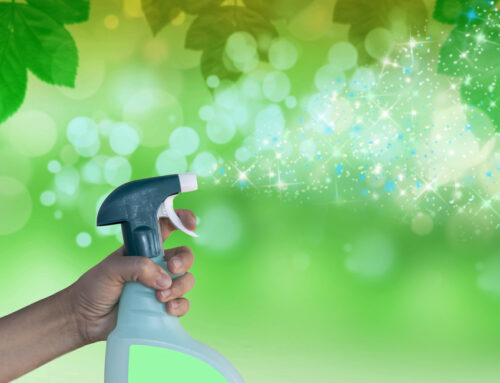
Battle Allergies with Cleanliness: Tips to Help Allergy-Proof Your Home
Ah, allergies! Those pesky little things that can turn your day from delightful to dreadful in a matter of seconds. If you’re an allergy sufferer, you know that the symptoms can be downright unbearable, and that’s why you need to make your home a haven from the outside world. After all, your home should be a place of rest and relaxation, not a constant source of sneezing, coughing, and itching.
But don’t worry, my friend, there are ways to allergy-proof your home and minimize the effects of allergens. In fact, with just a few simple house cleaning tips, you can create a comfortable and safe environment that will help you breathe easier and feel better.
Keep your floors clean
These underappreciated, but oh-so-important parts of our homes. And, unfortunately, they can also be a breeding ground for allergens. Dust mites, pet dander, and pollen can all accumulate on floors, making them a major source of irritation for allergy sufferers.
But fear not! Regularly cleaning your floors is a simple and effective way to minimize the amount of allergens in your home. Whether you have carpets, rugs, or hardwood floors, make sure to give them a good clean on a regular basis. And not just a quick once-over – I’m talking a deep clean that gets into all the nooks and crannies.
Now, when it comes to vacuuming, not all vacuums are created equal. If you’re an allergy sufferer, you’ll want to invest in a vacuum cleaner with a HEPA filter. HEPA filters are designed to capture even the tiniest of allergens, ensuring that they don’t get blown back into the air as you clean. So, you can say goodbye to those pesky dust mites, pet dander, and pollen, and hello to cleaner, fresher floors.
And don’t forget about those area rugs and doormats – they can be major culprits for trapping allergens. So, make sure to shake them out and give them a good wash every now and then.
Wash bedding and linens regularly
There’s nothing quite like the feeling of fresh, clean sheets. But did you know that washing your bedding regularly can also help eliminate dust mites and reduce the risk of allergic reactions? That’s right, those pesky little mites love to make themselves at home in our bedding and linens, but we don’t have to put up with it!
To keep those dust mites at bay, make sure to wash your sheets, pillowcases, and blankets once a week in hot water. Hot water is the key here – it’s the heat that kills off those mites and leaves your bedding fresh and clean. And don’t forget about your mattress and pillows – they can also be a breeding ground for allergens, so make sure to give them a good clean every now and then.
Now, I know what you might be thinking – “But washing my bedding once a week is such a hassle!” – but trust me, it’s worth it. Not only will it help reduce the risk of allergic reactions, but it also just feels good to climb into a freshly made bed at the end of a long day. Plus, you can even make it a little self-care ritual – light some candles, put on some calming music, and enjoy the feeling of clean, fresh sheets.
Use hypoallergenic bedding
The blissful comfort of a cozy comforter and a fluffy pillow – is there anything better? Well, actually, there is – hypoallergenic bedding! If you’re an allergy sufferer, you know how frustrating it can be to constantly battle allergens in your home, but hypoallergenic bedding can be a game-changer.
So, what exactly is hypoallergenic bedding? Simply put, it’s bedding made from materials that are less likely to attract dust mites, pet dander, and other allergens. Materials like silk or down alternative are great choices for pillows and comforters, as they are naturally hypoallergenic and can help reduce the amount of allergens in your home.
Now, I know what you might be thinking – “But doesn’t hypoallergenic bedding sound expensive?” – but fear not! There are plenty of affordable options out there, so you don’t have to break the bank to make your home a more comfortable and allergy-friendly place.
And, let’s not forget about the comfort factor. Hypoallergenic bedding is not only great for reducing allergens, but it can also provide a more comfortable sleeping experience. So, whether you’re looking for a fluffy pillow or a cozy comforter, there are hypoallergenic options out there that can meet your needs.
Keep your home dry
Mold and mildew – those sneaky little organisms that love to make themselves at home in our damp spaces. But fear not, my friend, there are ways to combat these pesky allergens and keep your home a safe and dry haven.
First and foremost, keeping your home dry is essential for reducing allergens. Mold and mildew thrive in moist environments, so make sure to use a dehumidifier in areas like the basement or bathroom to keep humidity levels low. Not only will this help reduce the risk of mold and mildew growth, but it can also make your home feel more comfortable and less stuffy.
And speaking of mold and mildew growth, it’s important to fix any leaks or water damage promptly. Even a small leak can lead to the growth of mold and mildew, which can be a major source of allergens in your home. So, if you notice any water damage or leaks, make sure to address them as soon as possible.
Now, I know what you might be thinking – “But dehumidifiers are so expensive!” – but trust me, they’re worth it. Not only can they help reduce allergens in your home, but they can also save you money in the long run by preventing damage to your home and belongings.
Use natural cleaning products
These magical solutions can turn even the messiest of homes into a sparkling clean haven. But did you know that many cleaning products contain chemicals that can trigger allergic reactions? It’s true – those sweet-smelling sprays and soaps can actually be a major source of irritation for allergy sufferers.
But fear not, my friend, there are natural cleaning alternatives that can help reduce exposure to harmful chemicals and minimize allergic reactions. Ingredients like vinegar, baking soda, and lemon juice are all great choices for natural cleaning products.
Vinegar, for example, is a natural disinfectant and can be used to clean just about anything. Mix equal parts water and vinegar in a spray bottle and use it to clean your kitchen counters, bathroom surfaces, and even windows. And not only is it effective at cleaning, but it’s also affordable and easy to find at your local grocery store.
Baking soda is another great natural cleaning product. It can be used to scrub away stains and grime, and can even be used to freshen up your carpets and upholstery. And let’s not forget about its deodorizing properties – sprinkle some baking soda in your trash can or fridge to keep things smelling fresh.
And last but not least, lemon juice can be a great natural cleaner and deodorizer. Mix it with some water and use it to clean your cutting boards, sinks, and even your microwave.
Keep pets groomed
These furry little creatures bring so much joy into our lives! But if you’re an allergy sufferer, they can also bring a whole lot of sneezing, itching, and coughing. That’s because pet dander, the tiny flakes of skin that pets shed, can be a major allergen for sensitive individuals.
But fear not, my friend, there are ways to reduce the amount of pet dander in your home and minimize allergic reactions. Regular grooming of your pets is one of the most effective ways to do this. By brushing your pet’s fur regularly, you can help remove loose hair and dander, which can reduce the amount of allergens in your home. And don’t forget about baths – giving your pet a good scrub can also help reduce the amount of dander they shed.
Now, I know what you might be thinking – “But my pet hates baths and grooming!” – but there are ways to make it a more enjoyable experience for them. Try using a gentle shampoo and conditioner, and make sure to reward your pet with treats and praise for good behavior. And for those pets who really don’t like baths, there are even waterless shampoos available that can help keep them clean and fresh.
And let’s not forget about the benefits of regular grooming for your pet’s health and happiness. Regular brushing can help prevent matting and tangles, and can even reduce the risk of hairballs (for cats, of course!).
In conclusion..
These house cleaning tips can help allergy sufferers create a comfortable and safe home environment. By keeping your home clean and dry, using hypoallergenic bedding, natural cleaning products, and keeping pets groomed, you can minimize the effects of allergens and make your home a haven from the outside world.
Share this article
Follow us
A quick overview of the topics covered in this article.





